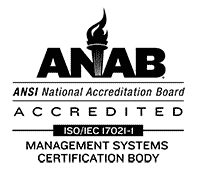Dealing with numerals and measurements in Chinese and Japanese texts
By Carson Mende, Posted on TCWorld
Imagine you just received the Chinese and Japanese translation of your manual, and are unable to decipher anything; even the numbers or measurements don’t look familiar anymore. 10,000 kW now appears as “1 something”, and your company is introduced as being founded in “35 something” rather than 1960. How could that be possible, let alone correct? Do you have any way to cross-check this? This article offers a synopsis of the numerical system and the different measurements in Chinese and Japanese.
Function of numerals
Numerals represent numbers and describe the term they belong to. This article is going to focus on the two main groups of numerals – the cardinal and ordinal numerals. Additionally, there are other groups like partitive or collective numerals. While cardinal numerals specify the quantity (e.g. 3 valves), ordinal numerals specify the order within a sequential (e.g. the 3rd valve).
The Arabic and Chinese numerical systems in comparison
What nowadays is called the Arabic numerical system was invented by Indian mathematicians and was later adopted by the West. It contains the ten digits (0,1,2,3,4,5,6,7,8,9) and is based on one thousand.
The ten digits seem to be a natural source and come from counting one’s fingers. So the Chinese numerical system also contains the ten digits, but it is based on ten thousand. It is more logical, i.e. all numbers are strictly added or multiplied. For example 12 (twelve) is 10+2 (??) and 20 (twenty) is 2×10 (??).
|
Arabic |
Chinese |
|
0 |
? or ? |
|
1 |
? (?) |
|
2 |
? (?) |
|
3 |
? (?) |
|
4 |
? (?) |
|
5 |
? (?) |
|
6 |
? (?) |
|
7 |
? (?) |
|
8 |
? (?) |
|
9 |
? (?) |
|
10 |
? (?) |
|
11 |
?? (??) |
|
12 |
?? (??) |
|
20 |
?? (??) |
|
30 |
?? (??) |
|
100 |
?? (??) |
|
1,000 |
?? (??) |
|
10,000 |
?? (??) |
|
1,000,000 (one million) |
??? (???) |
|
100,000,000 |
?? or ?? (??) |
|
1,000,000,000,000 (one trillion) |
?? |
There are two ways of expressing numbers in Chinese: the standard numbers and the commercial numbers (in brackets). The commercial numbers are used in a financial context or sometimes on price labels. The intention behind their complexity was to avoid fraud. These commercial numbers also exist in Japanese. However, they are rarely used and are a little different.
Please be aware that the meaning of ?? is not clear. While?? is used in Japan, Korea and Taiwan for one trillion, in the People Republic of China?? actually means one million and also denotes the prefix mega-. To avoid any misunderstandings, the Chinese now generally use ??? when they mean one million.
Read the full article here.





